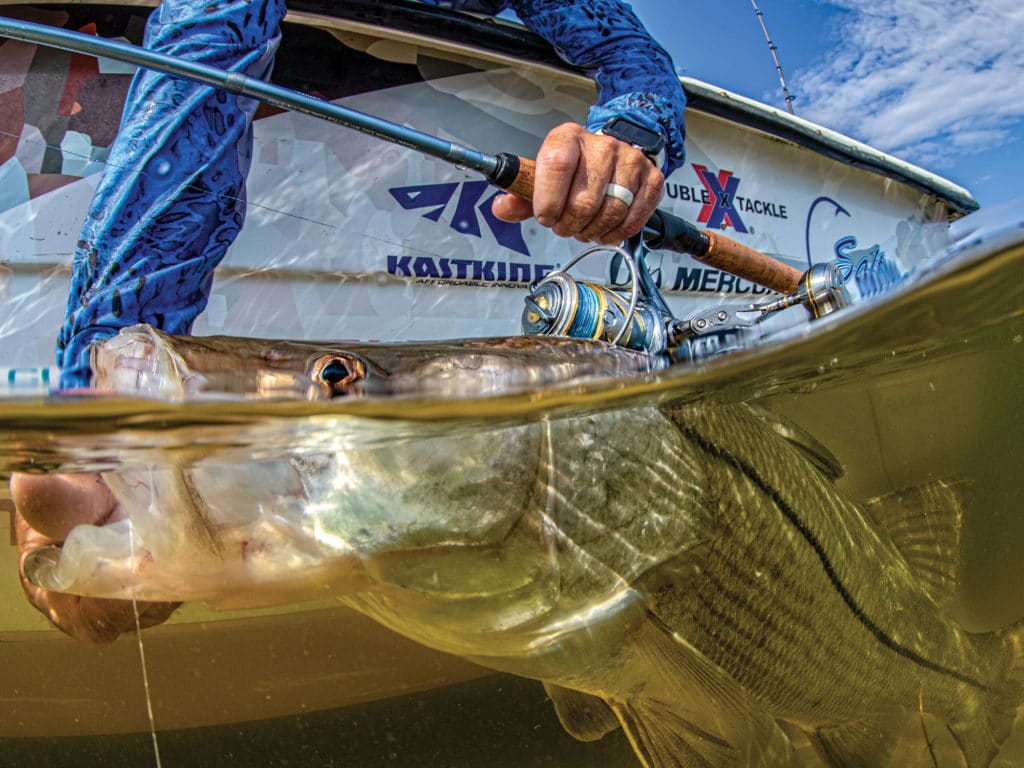
I do not like the cold.
I tend to get grumpy when it’s cold. OK, grumpier. When it is cold, my hands start to ache, my ears burn, and I get that uncomfortable shiver down my back. I become lethargic and don’t want to move around more than necessary.
None of that motivates me to fish; mostly, it prompts me to find some place warmer. But here’s the thing: A lot of fish don’t like the cold either, and they too seek out warmer waters when the temperatures start to drop. Interestingly, two Gulf of Mexico gamefish species maintain similar patterns for finding warmer waters when the Gulf flats start to chill. Both speckled seatrout and snook employ similar inshore migrations when the water starts to cool. And in regions where both species are found, anglers can usually locate them in the fall and winter holing up in the same locations.
This makes targeting these two species convenient, and many of the strategies used for one species are applicable to the other during the cooler months. You might find redfish too.
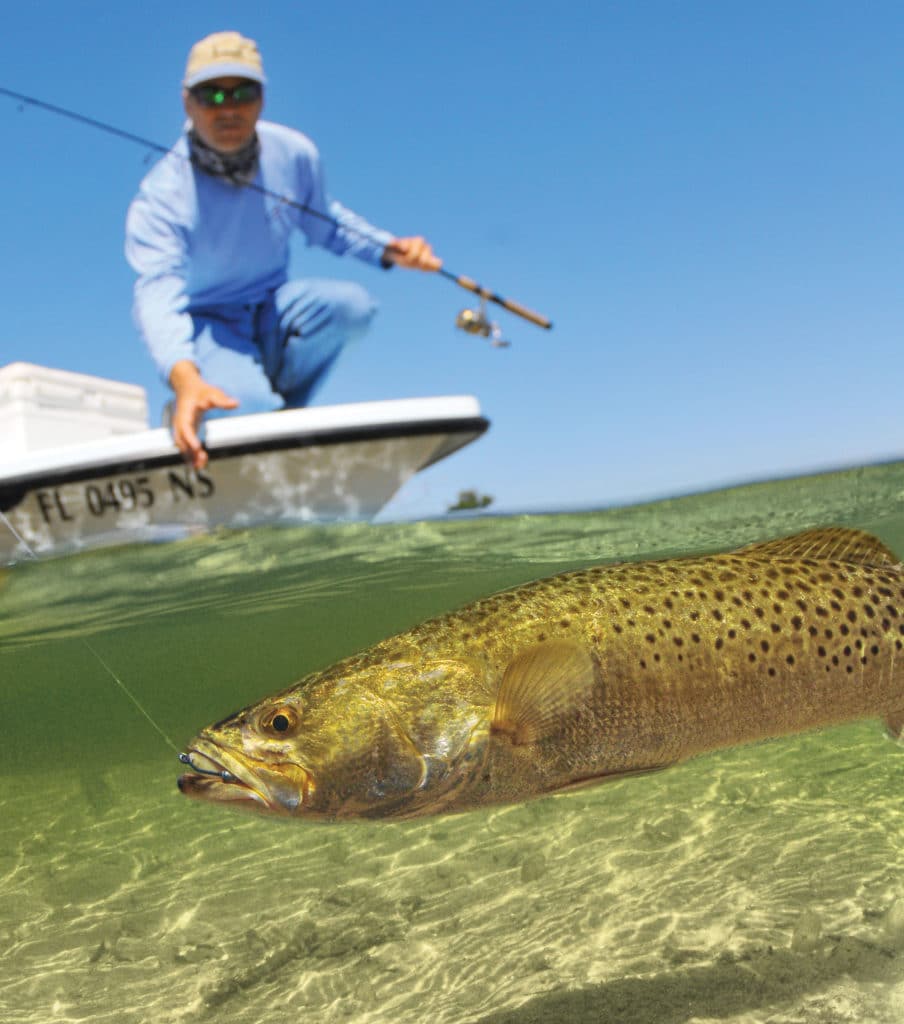
Each fall, as the air and water temperatures start to drop, snook and trout follow a similar pattern and move from the skinny-water open flats to the deeper holes in creeks and rivers.
I usually begin looking for specks and snook around the creekmouths and rivermouths when the flats start to drop below 65 degrees. By the time the water has dropped below about 55 degrees, the fish have migrated farther up the creeks and rivers seeking deeper water and cover. Thus, I tend to think of their migrations in two stages: first, to the mouths of creeks and rivers in late November, and second, farther up the rivers and creeks in search of deeper holes that act as refuges as it gets colder in December and January.
Along Florida’s Gulf coast, many of the rivers and creeks are fed by springs that consistently push out 72-degree water, providing warmer water for the cold-adverse fish. In the summer, 72-degree water is much cooler than the 85-plus-degree Gulf flats, but in the winter, that same 72-degree water can be a lot warmer than the surrounding waters. Temperature-sensitive fish like speckled trout and snook will seek out those warmer waters.
When linesiders and specks make this annual inshore migration, locating fish can be formulaic because they tend to hole up in the same locations as they look for deeper holes near cover. Thus, your best bet for quickly finding likely locations is your depth finder. Contemporary electronics can easily identify holes that might hold fish. Look for areas that drop down to at least 7 to 10 feet in depth. Side-scan technologies can show large swaths of the bottom, so it can be easier to spot the holes and structure you might have missed before.
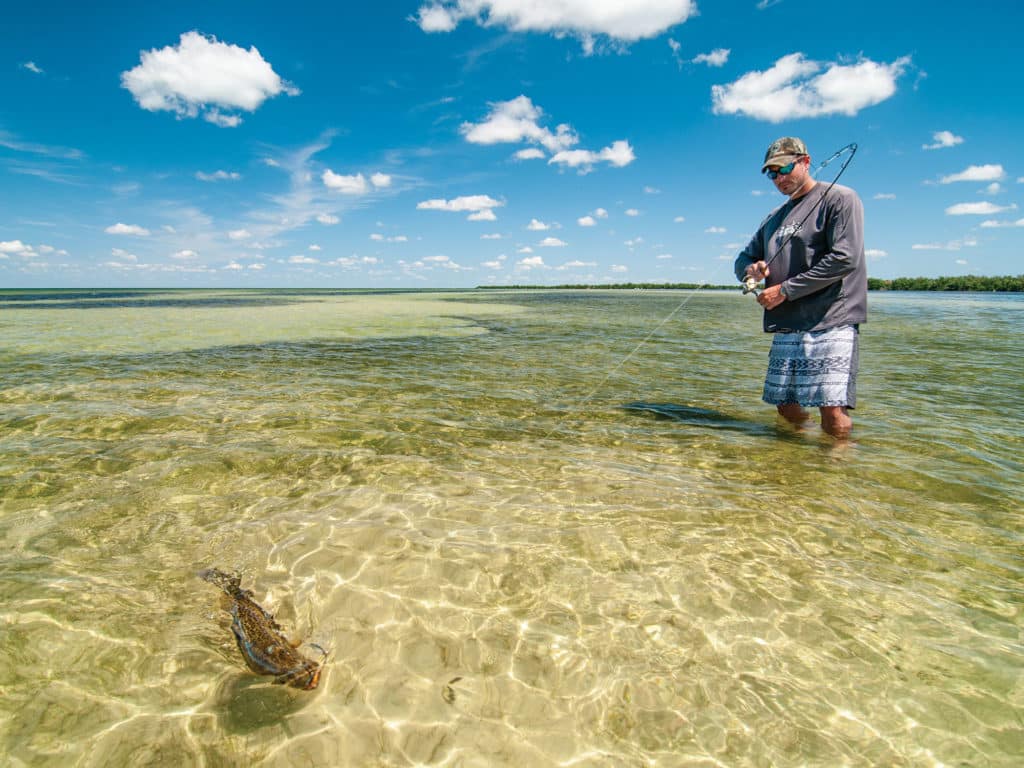
Many anglers will also slow-troll lures along rivers and creeks to locate fish schooling in deeper holes. Lures like Rapala’s X-Rap Twitchin’ Minnow or MirrOlure’s MirrOLip Suspending Crankbait are great for slow-trolling to locate fish. Capt. Jimbo Keith, of Saltwater Assassin Charters, employs this method to locate fish, particularly as the water dips into its colder phases. According to Keith, “Slow-trolling a Rat-L-Trap-, particularly in chrome with a blue back, can draw out snook and trout when the water gets cold and the fish get lethargic.”
Likewise, look for holes where creeks and rivers intersect, where there is at least a fair amount of water movement when the tide is running. In addition to seeking warmer water temperatures, trout and snook want cover to hide from sharks and porpoises, so they seek out deep holes, moving water and some sort of cover—like mangroves, bridge or dock pilings, or oysters and rocks. Residential canals—particularly those that are dredged a bit deeper, say more than 8 feet deep—can be ideal locations to target snook in particular because the abundant dock pilings provide excellent structure and cover.
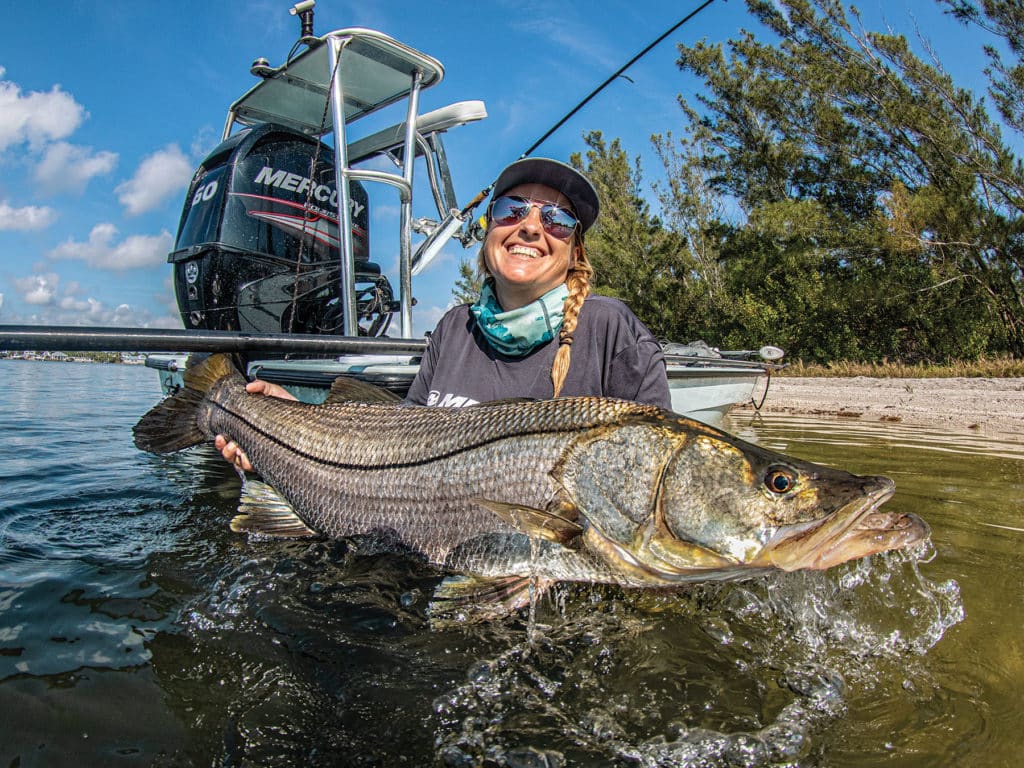
Both trout and snook also prefer moving water to still water. Holes where creeks and rivers converge can offer them the opportunity to hunt more efficiently. In colder water, both trout and snook grow lethargic, less likely to expend energy to hunt. These fish prefer locations where the tidal flow gets compressed in places like creekmouths or rivermouths and functions like a bait funnel, bringing baitfish into a tighter space, making it easier for snook and trout to grab a passing meal.
Outgoing tides benefit winter snook and trout angling because that is when the warmer water from the springs pushes out rather than the colder water from the Gulf pushing up the creeks and rivers. Your best time to start targeting cold-weather trout and snook is about 30 minutes after the tide shifts to outgoing. It usually takes about 30 minutes to an hour after the tide shifts for the water to start flowing.
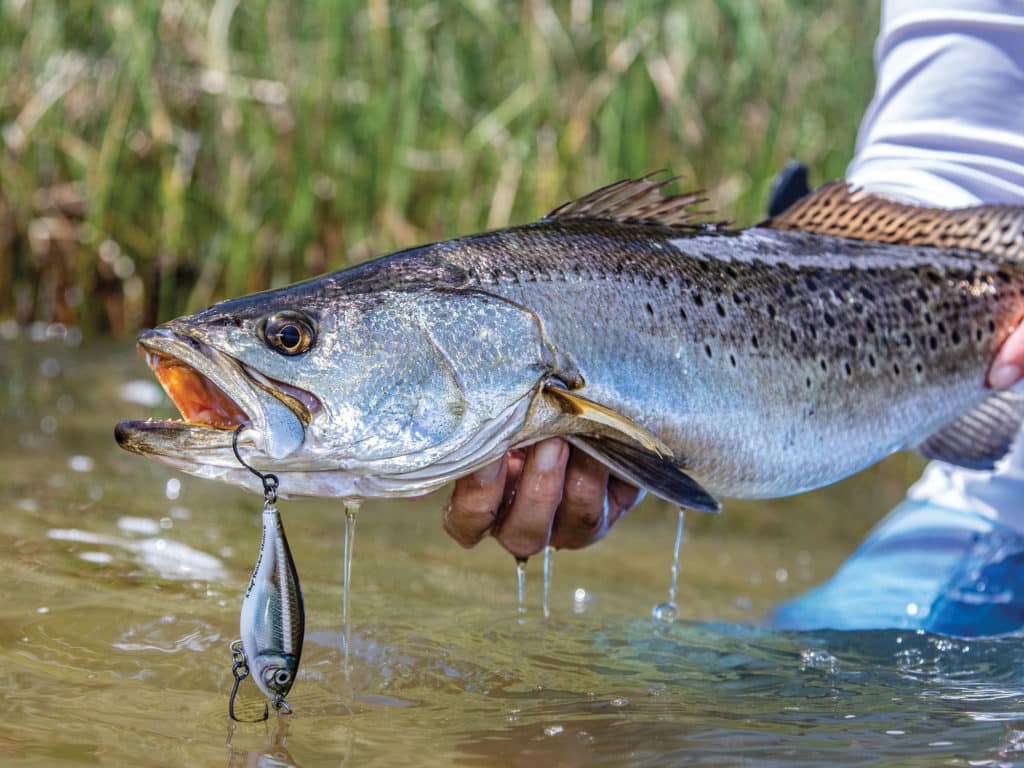
In addition to slight temperature variations between an incoming and an outgoing tide, the outgoing tide will also push out the baitfish that snook and trout feed on during the tide change. So, ambush points—like rocky points, cuts, pilings or other structure—also make hunting more efficient for snook and trout that are trying to conserve energy in the cooler winter waters.
As to baits and lures, live shrimp are always the go-to, particularly if you’re targeting trout or smaller juvenile snook. Use a 2/0 to 3/0 circle hook and 20-pound fluorocarbon leader. If you are just targeting trout, you may want to use a smaller-diameter leader. But if snook are also in your sights, a heavier leader like a 20- to 30-pound fluorocarbon will help resist abrasion from the snook’s sharp gill plates or rubbing against the cover the fish use.
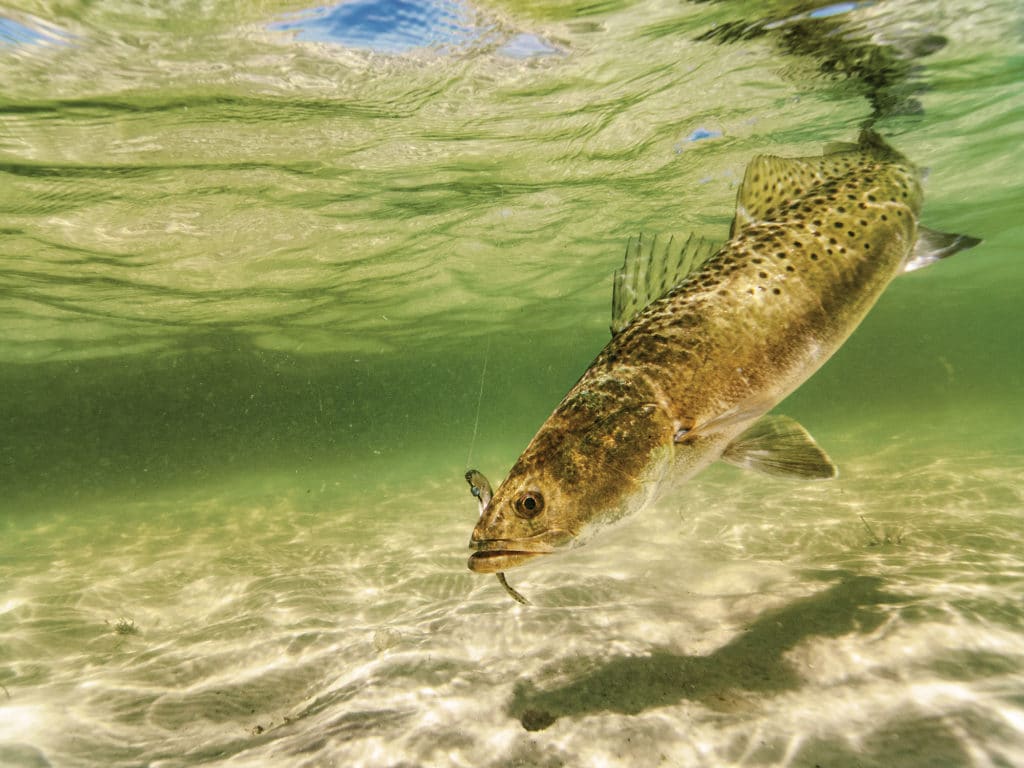
Because trout and snook hole up deeper in the winter, using a popping cork may not be as efficient a technique as it is in warmer waters out on the flats. Try free-lining the shrimp in the tidal flow across the hole you’re targeting instead. If you believe the water is moving too fast, or if the shrimp just isn’t getting down in the water, add a few split-shot weights above the leader.
Also, remember that when targeting snook, linesiders can be finicky, selective eaters and wary of baits
encumbered with a lot of hardware like swivels or split rings. So, rig minimally and use clear lines such as fluorocarbon for leader materials. I prefer a minimalist approach with no swivels or other hardware, just the leader to line joined with a solid connecting knot, like a -surgeon, Blood or uni-knot.
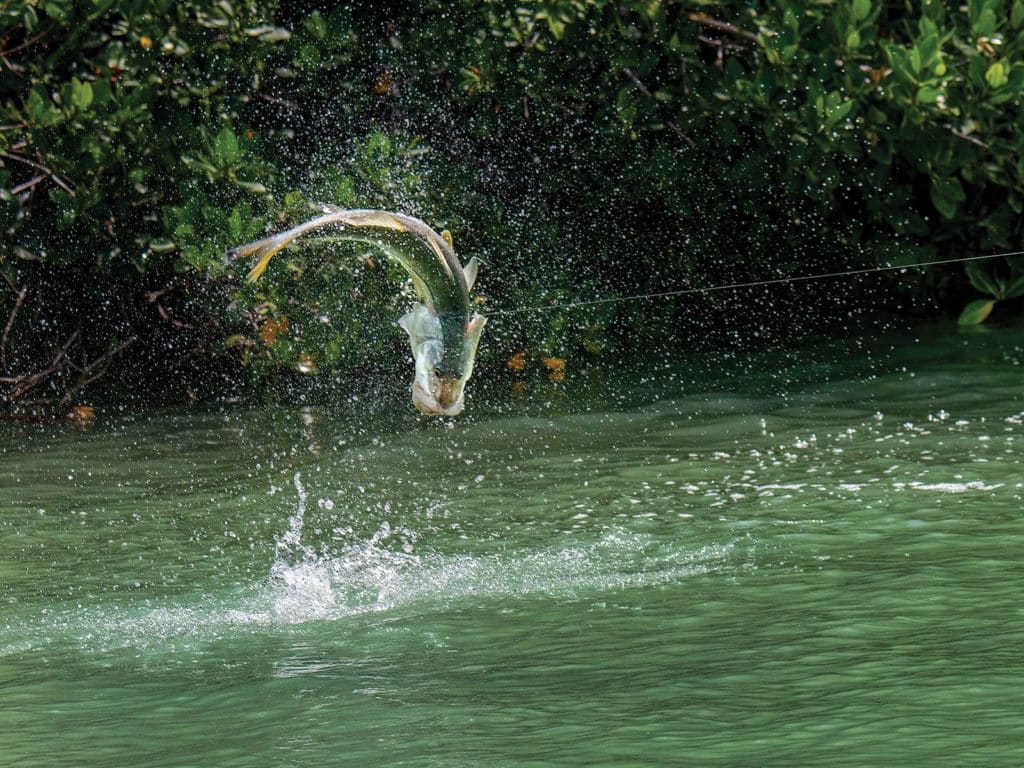
If shrimp aren’t readily available, other live baits such as greenbacks (threadfin herring) or whitebait (scaled sardine) can be deadly for both trout and snook. If you’re targeting larger snook, finger mullet are also a great bait. If you’re fishing for bigger snook with finger mullet, consider increasing hook sizes to 4/0 and going to 30- or 40-pound leader. In most cases, however, remaining with the smaller hooks and the lighter leader will be not only sufficient, but also more adaptable to targeting trout at the same time. You’ll just have to expect a few break-offs.
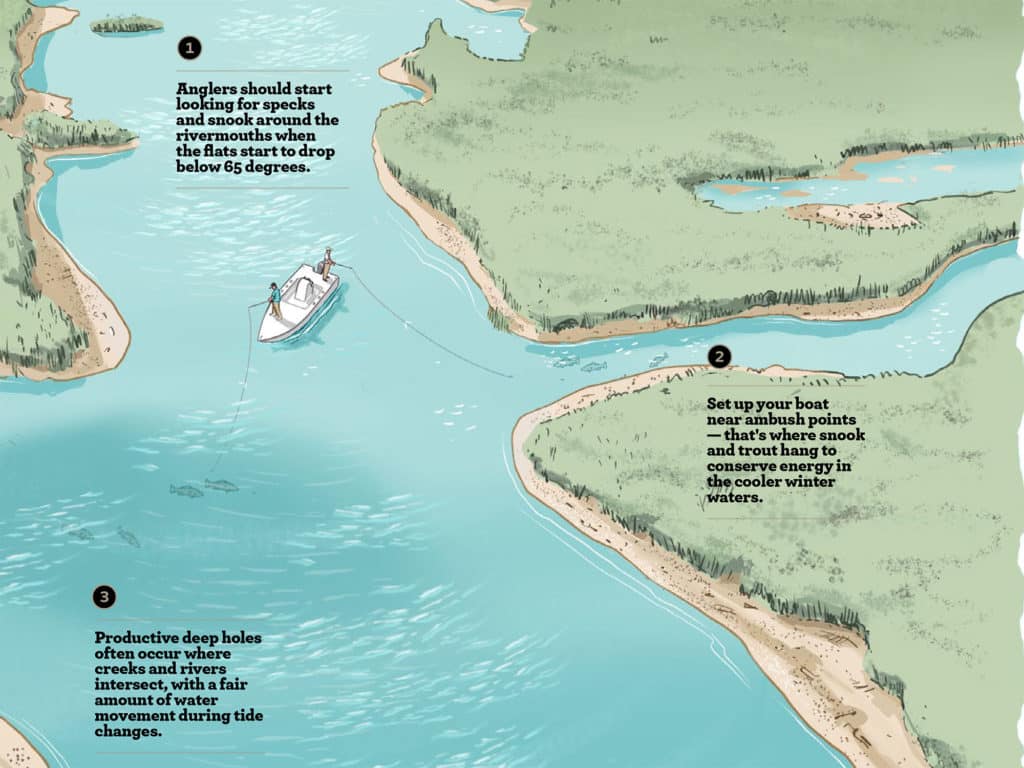
As to artificials, soft bodies such as shad tails, swimbaits, wedge tails and jerkbaits of about 3 inches can be ideal. When working soft bodies, let the lure drop deep, and retrieve it slowly with an occasional twitch, keeping the lure off the bottom but deep in the water. Remember, winter trout and snook are lethargic and not looking to expend the energy to chase baits. Slow-moving baits are more likely to entice the bite.
In addition to soft bodies, both trout and snook will readily take a range of hard lures, particularly suspending twitchbaits. Remember to slow your retrieval because the cold water will leave specks and snook languid.
So, when the water starts to cool and you feel your shoulders hunching in against the cold, start moving your target locations to creekmouths and rivermouths to look for specks and snook. As Keith puts it: “Since the fish are clustered together, it can be some of the most consistent fishing of the year.”
Surefire Soft Baits
- Berkley Gulp! Swimming Mullet: Rig the Berkley Gulp! Swimming Mullet to a jig head and bounce the bait along the bottom.
- D.O.A. Shrimp: Pre-rigged in the package, the D.O.A. Shrimp is a great option for a slow presentation. Fish bite it on the fall.
- Egret Wedgetail: MulletTry rigging the Wedgetail with a weightless swimbait hook. The action really shows during a slow retrieve.
- Z-Man Jerk ShadZ: The tough, scented Jerk Shadz is ideal when rigged weedless to a weighted worm hook. Cast this bait near docks and mangroves stress-free.









